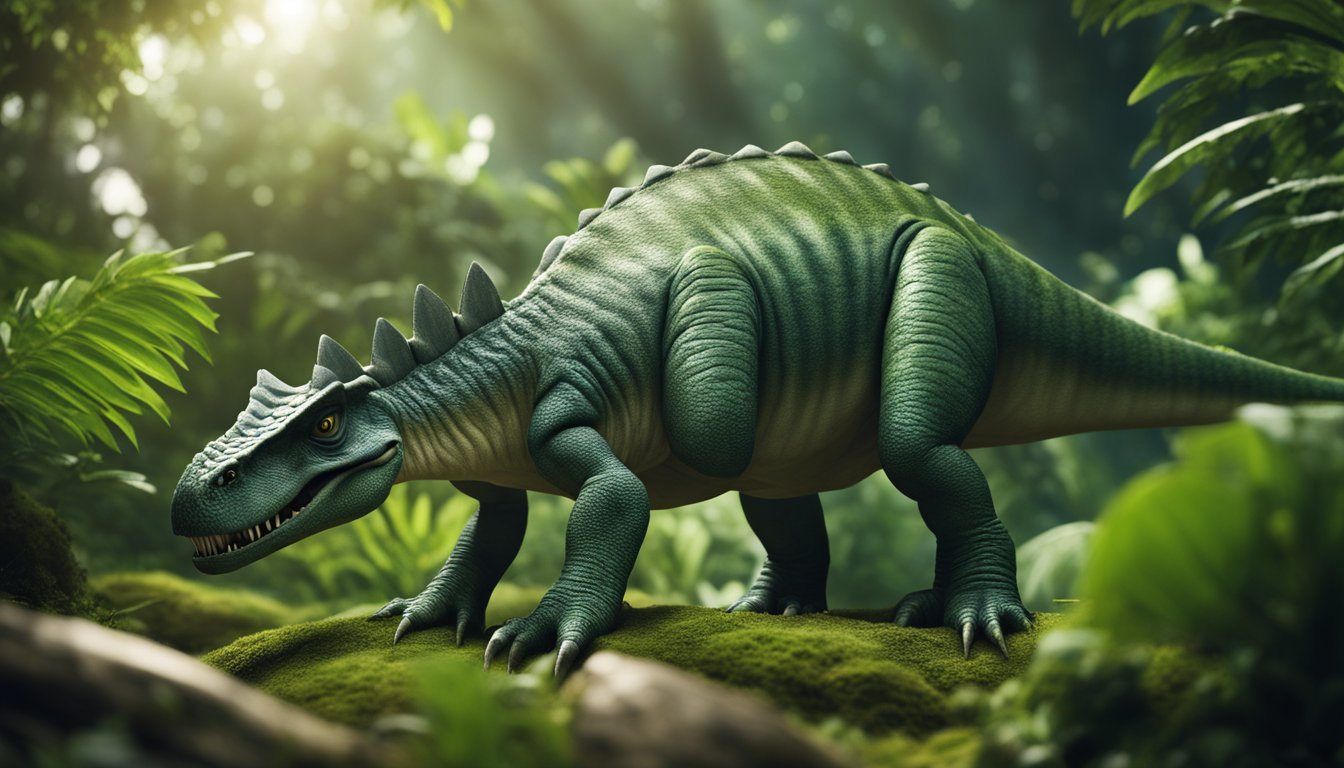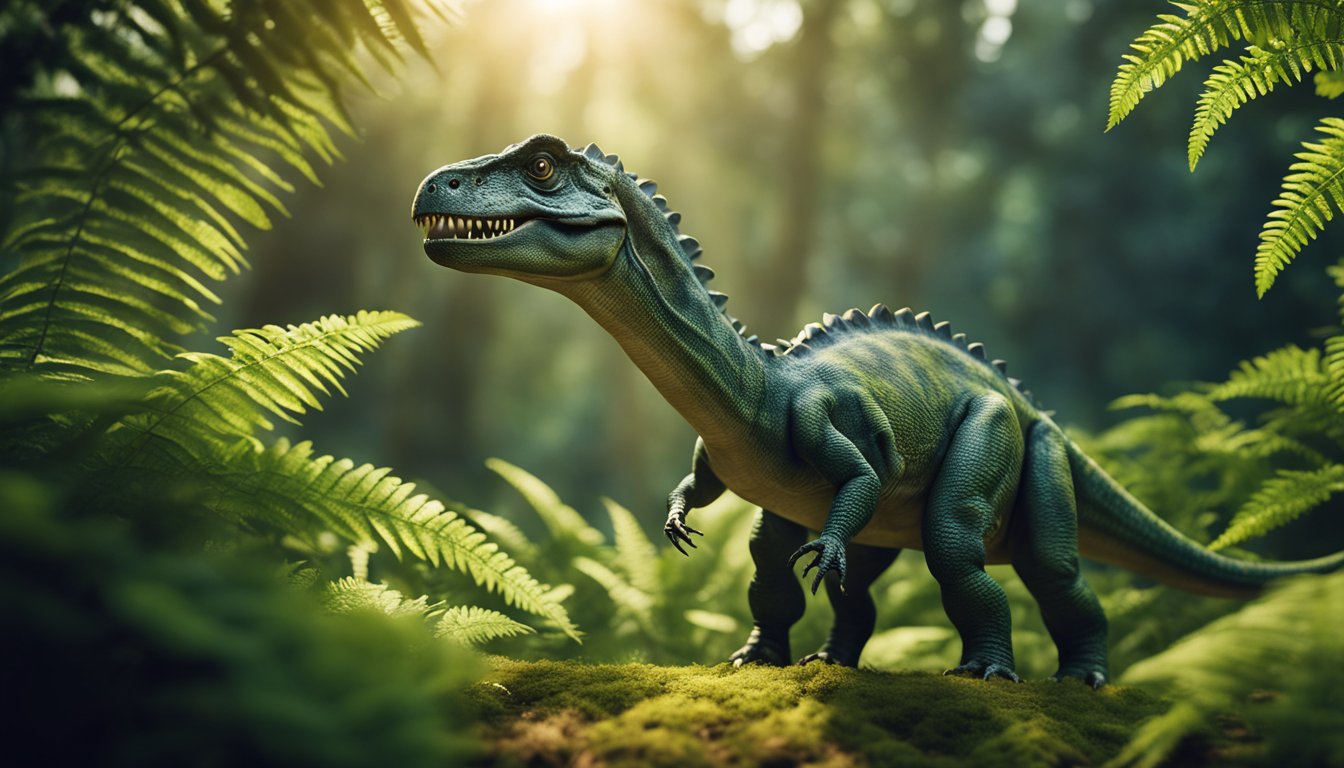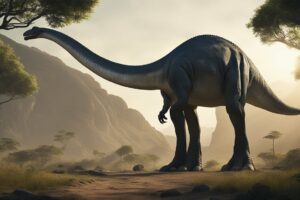Maiasaura, also known as the “Good Mother Dinosaur,” was a herbivorous dinosaur that lived during the Late Cretaceous period, approximately 80 to 75 million years ago.
This dinosaur was first discovered in Montana, USA, in 1978 by paleontologist Jack Horner and his team.
The name “Maiasaura” means “good mother lizard” in Greek, which is fitting as this dinosaur is known for its nurturing behavior towards its young.

Maiasaura was a large ornithopod dinosaur that could grow up to 9 meters in length and weigh up to 2,500 kg.
It had a distinctive duckbill-shaped mouth and a large crest on its head. This dinosaur is particularly well-known for its parenting behavior.
Fossil evidence shows that Maiasaura built nests and cared for its young, which is why it has earned the nickname “Good Mother Dinosaur.” It is believed that Maiasaura was one of the first dinosaurs to exhibit this type of parental care, making it an important species for paleontologists to study.
Discovering Maiasaura: Unearthing the Good Mother
Maiasaura Peeblesorum, or the “Good Mother Lizard,” is a species of dinosaur that lived approximately 76.7 million years ago during the Late Cretaceous period.
The discovery of this dinosaur is credited to Jack Horner, a renowned paleontologist from the Museum of the Rockies in Montana.
The First Discovery by Jack Horner
In 1978, Horner and his team were excavating a dinosaur nesting site in Montana known as Egg Mountain.
It was during this excavation that Horner discovered fossilized bones that belonged to a new species of dinosaur.
The bones were different from any other dinosaur fossils previously discovered in the area, and Horner knew he had found something special.
After careful analysis, Horner determined that the bones belonged to a new species of hadrosaurid dinosaur.
He named the dinosaur Maiasaura Peeblesorum, which means “good mother lizard of Peebles.” The name was chosen because Horner discovered that Maiasaura was a caring and nurturing parent that took care of its young.
Egg Mountain: A Nesting Ground Revelation
Egg Mountain was a significant discovery because it was the first time that scientists had found evidence of dinosaur nesting sites.
Horner’s team discovered hundreds of Maiasaura eggs and juveniles at the site, providing valuable insight into the behavior and development of these ancient creatures.
The discovery of Egg Mountain and the Maiasaura fossils revolutionized the way scientists thought about dinosaurs.
It provided evidence that dinosaurs were not just giant, scary creatures that roamed the earth, but that they also had complex social structures and cared for their young.
Today, the Museum of the Rockies houses the type specimen of Maiasaura Peeblesorum, along with many other dinosaur fossils and exhibits.
The discovery of Maiasaura and Egg Mountain continues to inspire paleontologists and scientists around the world to study the fascinating world of dinosaurs.
Fun Fact: Maiasaura was named after the Greek words “maia” meaning “good mother” and “sauros” meaning “lizard.”
The Life of Maiasaura: From Hatchling to Adult

Maiasaura, the “good mother lizard,” was a herbivorous dinosaur that lived during the Late Cretaceous period, around 75-80 million years ago.
Maiasaura was a type of hadrosaur, also known as a duck-billed dinosaur, and grew up to 30 feet long, making it one of the largest herbivorous dinosaurs of its time.
Growth Stages: Baby to Juvenile to Adult
Maiasaura began its life as an egg, which was incubated in a nest built by its parents. The nests were bowl-shaped and made of mud, leaves, and twigs.
After hatching, the baby Maiasaura, also known as a hatchling, would have been about the size of a chicken.
As it grew, it went through several stages, from baby to juvenile to adult.
Maiasaura reached sexual maturity at around 3-4 years of age, but it took much longer to reach skeletal maturity, which occurred at around 8-10 years of age.
During this time, Maiasaura grew rapidly, adding up to 1,000 pounds of weight per year.
Social Herds: Living and Moving Together
Maiasaura lived in large herds, which could consist of hundreds of individuals.
These herds provided protection from predators and allowed for social interactions between individuals.
Maiasaura herds were also able to migrate long distances in search of food and water.
Maiasaura was a caring parent, and evidence suggests that they looked after their young, which is why they were given the name “good mother lizard.” Maiasaura parents would have guarded their nests and provided food for their hatchlings.
Fun fact: The first Maiasaura fossils were discovered in Montana in the 1970s by paleontologist Jack Horner.
Horner named the dinosaur after the Peebles family, on whose land the fossils were found.
Parental Care: Maiasaura’s Nurturing Behavior

Maiasaura, also known as the “good mother lizard,” was a herbivorous dinosaur that lived during the Late Cretaceous period, around 80-75 million years ago.
This dinosaur species was known for its exceptional parental care, which contributed to the survival of their young.
Nesting and Incubation: A Mother’s Role
Maiasaura mothers would lay 30 to 40 eggs in a nest made of rotting vegetation, which generated heat to incubate the eggs.
The mothers would take turns incubating the eggs and caring for the hatchlings.
This behavior was similar to that of modern-day birds, who also use their body heat to keep their eggs warm.
Growth and Survival: The Challenges of Youth
Once the eggs hatched, the baby Maiasaura were extremely vulnerable and required constant care and protection.
The parents would guard the nesting site from predators and bring food to the hatchlings.
The young dinosaurs had a high mortality rate due to predators and environmental factors, but the parental care provided by the Maiasaura helped increase their chances of survival.
Laurie Trexler, a paleontologist who studied Maiasaura fossils, discovered that the baby Maiasaura grew rapidly.
At six months old, they were already the size of a large dog. By one year old, they were fully grown.
This rapid growth allowed the young dinosaurs to reach adulthood quickly, which was essential for their survival in a dangerous and unpredictable environment.
In conclusion, Maiasaura’s nurturing behavior towards their young was exceptional and contributed to their success as a species.
Their parental care was similar to that of modern-day birds and helped increase the chances of survival for their offspring.
The Maiasaura’s ability to grow quickly also played a significant role in their survival.
Maiasaura’s Ecosystem: Coexisting with Dinosaurs and Nature

Maiasaura lived in a complex ecosystem filled with a variety of predators and prey, flora and fauna, and other dinosaurs.
This section will explore how Maiasaura fit into its environment and how it survived in the late Cretaceous period.
Predators and Prey: The Balance of Life
Maiasaura was an herbivorous dinosaur that lived alongside many predators, including the fierce Tyrannosaurus Rex and the agile Troodon.
Despite its size and strength, Maiasaura was not immune to attacks from these predators.
To protect themselves and their young, Maiasaura used their strong tails and sharp teeth to fend off attackers.
In addition to predators, Maiasaura also coexisted with other herbivorous dinosaurs such as the Brachylophosaurus.
These two species likely competed for resources such as vegetation and water.
Flora and Fauna: Diet and Environment
Maiasaura lived in a warm and humid environment filled with lush vegetation. They primarily ate plants such as ferns, conifers, and flowering plants.
Maiasaura had a unique adaptation in their crest that allowed them to process tough vegetation.
They also had a unique social structure that helped them survive droughts and other environmental challenges.
Maiasaura lived in what is now North America, specifically in the region that is now Montana and Alberta.
The vegetation in this region was diverse and plentiful, providing ample food for Maiasaura and other herbivorous dinosaurs.
In addition to other dinosaurs, Maiasaura coexisted with a variety of birds and other small creatures.
These animals likely played a role in the ecosystem by helping to pollinate plants and control insect populations.
Overall, Maiasaura was a unique and important part of its ecosystem.
Its adaptations and social structure allowed it to survive in a challenging environment filled with predators and other herbivores.
By understanding how Maiasaura fit into its ecosystem, we can better appreciate the diversity and complexity of life during the Mesozoic era.
Fun Fact: Maiasaura is one of the few dinosaurs that have been found with embryos inside their eggs, providing valuable insight into the reproductive strategies of these ancient creatures.
Frequently Asked Questions

How did Maiasaura care for their young?
Maiasaura dinosaurs were known for being good mothers.
They laid their eggs in nests and took care of their young until they were old enough to fend for themselves.
Scientists think that Maiasaura parents may have taken turns caring for their young, with one parent staying at the nest while the other went out to find food.
What kind of environment did Maiasaura dinosaurs live in?
Maiasaura lived in what is now Montana, USA, during the Late Cretaceous period, about 80-75 million years ago.
The environment was warm and humid, with plenty of vegetation for the herbivorous dinosaurs to eat.
Maiasaura fossils have been found in sedimentary rocks that were deposited in ancient floodplains and river channels.
What did Maiasaura dinosaurs eat to stay healthy?
Maiasaura were herbivorous dinosaurs and ate a variety of plants, including ferns, cycads, and conifers.
They had a beak like a duck’s and teeth arranged in rows that helped them grind up tough plant material.
Maiasaura may have also swallowed stones to help them digest their food.
How have scientists been able to learn about Maiasaura nesting habits?
Scientists have been able to learn about Maiasaura nesting habits by studying fossilized nests and eggs.
They have found evidence that Maiasaura built large communal nests, where several females would lay their eggs together.
They have also found fossilized eggshells that show signs of being incubated, which suggests that Maiasaura parents sat on their eggs to keep them warm.
What other dinosaurs shared the habitat with Maiasaura?
Maiasaura shared their habitat with a variety of other dinosaurs, including the carnivorous Tyrannosaurus rex and the herbivorous Triceratops.
Maiasaura may have also interacted with other hadrosaurid dinosaurs, such as Hypacrosaurus and Lambeosaurus.
What evidence do paleontologists have that Maiasaura went extinct?
Paleontologists have found fossilized bones and teeth of Maiasaura that date back to the Late Cretaceous period.
However, there is no evidence that Maiasaura survived the mass extinction event that occurred at the end of the Cretaceous period, about 66 million years ago.
This event wiped out the dinosaurs and many other species on Earth.






